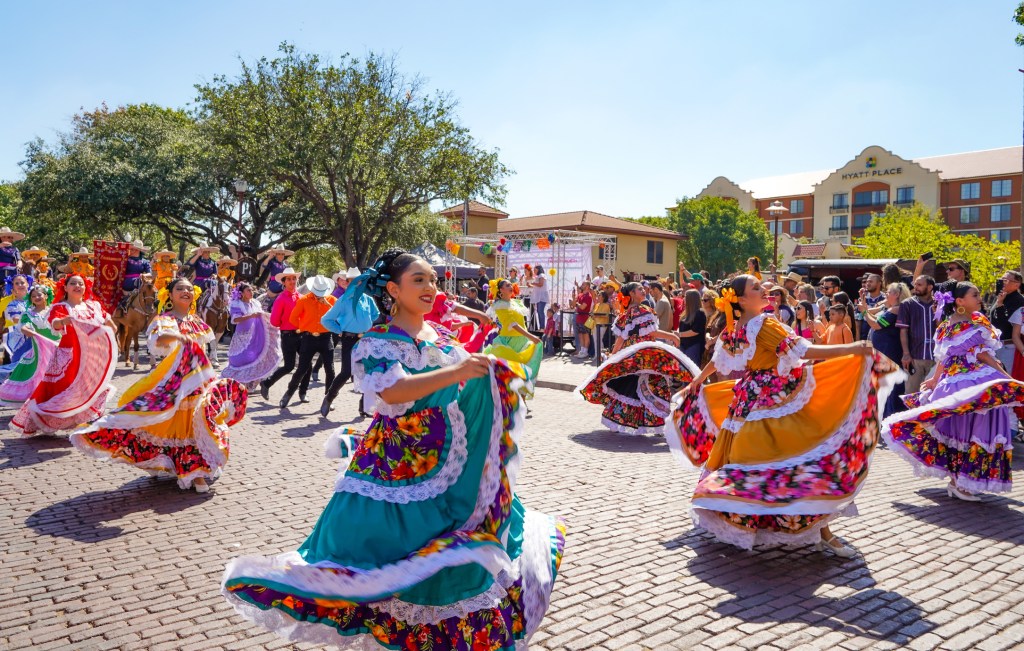The Starbucks down the street from where I work changed its playlist from coffeehouse blues to lively salsa. The Target where I pick up my toothpaste has calaveritas, or sugar skulls, propped near the front door. Promotional emails land in my inbox with the headline: “Celebrate Hispanic Heritage Month by taking 15% off your next order.”
Every September the “Heritage” part of Hispanic Heritage Month briefly takes over marketing campaigns and corporate lingo. The “celebrations” start at midnight on September 15 to commemorate the independence of five Central American countries, including El Salvador and Honduras. President Lyndon Johnson signed National Hispanic Heritage Week into law in 1968, which was then expanded to a month 20 years later by President Ronald Reagan.
But I didn’t know these facts prior to this piece—I had to search for them. Which raises a question: If neither a coffeehouse playlist, promotional campaigns, nor fast facts resonate with my Hispanicness, then what does?
Hispanics, it bears reminding, are extremely diverse. According to recent Census data, there are 63.7 million Hispanics living in the U.S. While those of Mexican origin make up the majority of the Hispanic population (approximately 60 percent), there are other distinct enclaves: Puerto Ricans in New York, Cubans in Miami, and Salvadorians in Washington, D.C. Venezuelan, Dominican, and Guatemalan immigrants are the fastest growing Hispanic groups in the U.S.
Beyond, and even within, national origin groups, state and local subcultures pop-up throughout the country. Tejana, as a personal example, can be attributed to any Texan of indigenous and Mexican descent. My brown hair and tanned skin bear marks of this more specific heritage. Culturally, the distinct flair of Tex-Mex food—nothing like a good fajita—and musical influences like Selena Quintanilla still hold sway over my tastes. (All are Hispanic as well, but distinct from the mofongo a NuevaYorkino might have while listening to Héctor Lavoe.)
These culinary and musical aspects are part of my Hispanic identity, but generational behaviors have shaped me even more. The value of hard work was always vocalized growing up, for example. My mother—with little regard for future The Dispatch editors—reminded my siblings and me growing up to “never half-ass anything.” No doubt she was influenced by her own mother, who would spend every Saturday deep-cleaning her house. All the glass figurines would be carefully removed from the shelves and cleaned in the bathtub. The window curtains were taken down and washed. The carpets and floors were vacuumed and mopped thoroughly. The kitchen and clothes were washed and bleached. Work always required 100 percent effort—all while Luis Miguel played on full blast in the background.
Perhaps surprisingly, I never thought of speaking Spanish as a main component of Hispanic identity. But that’s not uncommon. While most U.S. Hispanics speak Spanish, about a quarter do not. Seventy-eight percent of Hispanics even say it is not necessary to speak Spanish in order to be considered Hispanic. Various dialects and accents abound, and it’s possible for two Hispanics in the U.S. to speak “Spanish” and yet not be able to comfortably understand each other.
Culture, behaviors, and language have influenced, to varying degrees, how I understand my Hispanic background. But how distinct is it from my American identity? Is there tension between the two?
Throughout high school and college, I was a part of the National Hispanic Institute (NHI) which, among other things, hosts a program called the Lorenzo de Zavala Youth Legislative Session. In it, students run for various mock state offices: They organize campaigns, draft mock legislation, and debate policies that identify solutions to the needs of various Hispanic communities. Students are also prompted to understand their own background and define what “being Latino” means to them.
The program did a good job of instilling an appreciation of the formative power of American institutions. It revealed how these institutions have the ability to create leaders regardless of background or circumstances. The NHI didn’t advertise a pipe dream, but instead showed how people can meaningfully contribute to their particular communities—oftentimes within Hispanic communities—through education, mentorship, and perseverance.
And that’s something that does crop up in my mind each mid-September to mid-October. I am reminded of how the ongoing fusion of cultural backgrounds is a source of strength in America, and how our nation is enriched and united by a shared appreciation for the multiplicity of experiences that shape us. Appreciating the rules and procedures of American institutions while incorporating the hard work and resilience of my Hispanic background helps me see the two identities woven together, not weighed against each other—even as Luis Miguel plays in the background.
Drawing on strengths from both cultures has allowed me, and many other Hispanics, to navigate life in the U.S. while contributing to the tapestry of heritages that makes up our country. And they’ve helped me understand how “Hispanic” is not a dualistic identity, but a dynamic one that continues to evolve.









Please note that we at The Dispatch hold ourselves, our work, and our commenters to a higher standard than other places on the internet. We welcome comments that foster genuine debate or discussion—including comments critical of us or our work—but responses that include ad hominem attacks on fellow Dispatch members or are intended to stoke fear and anger may be moderated.